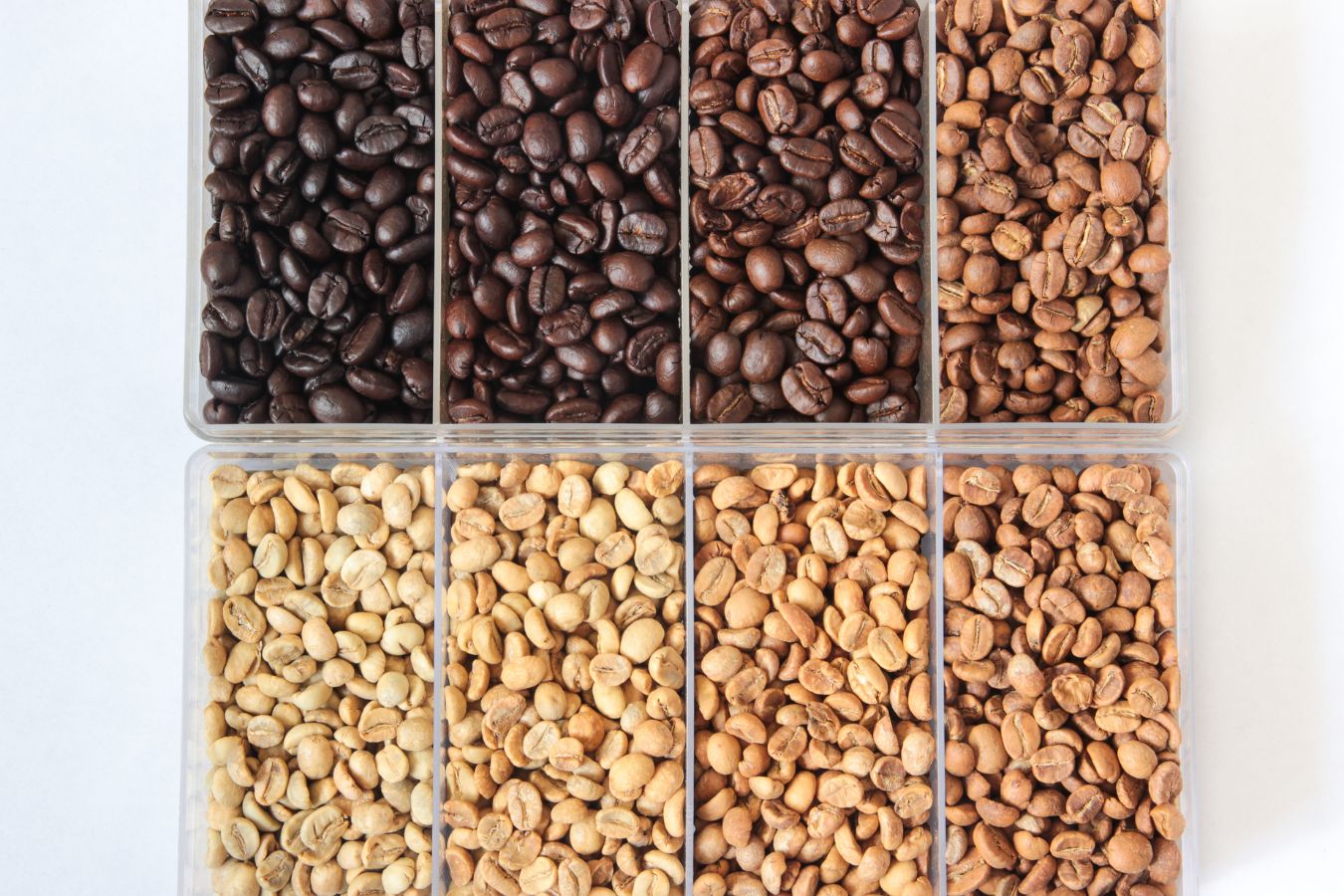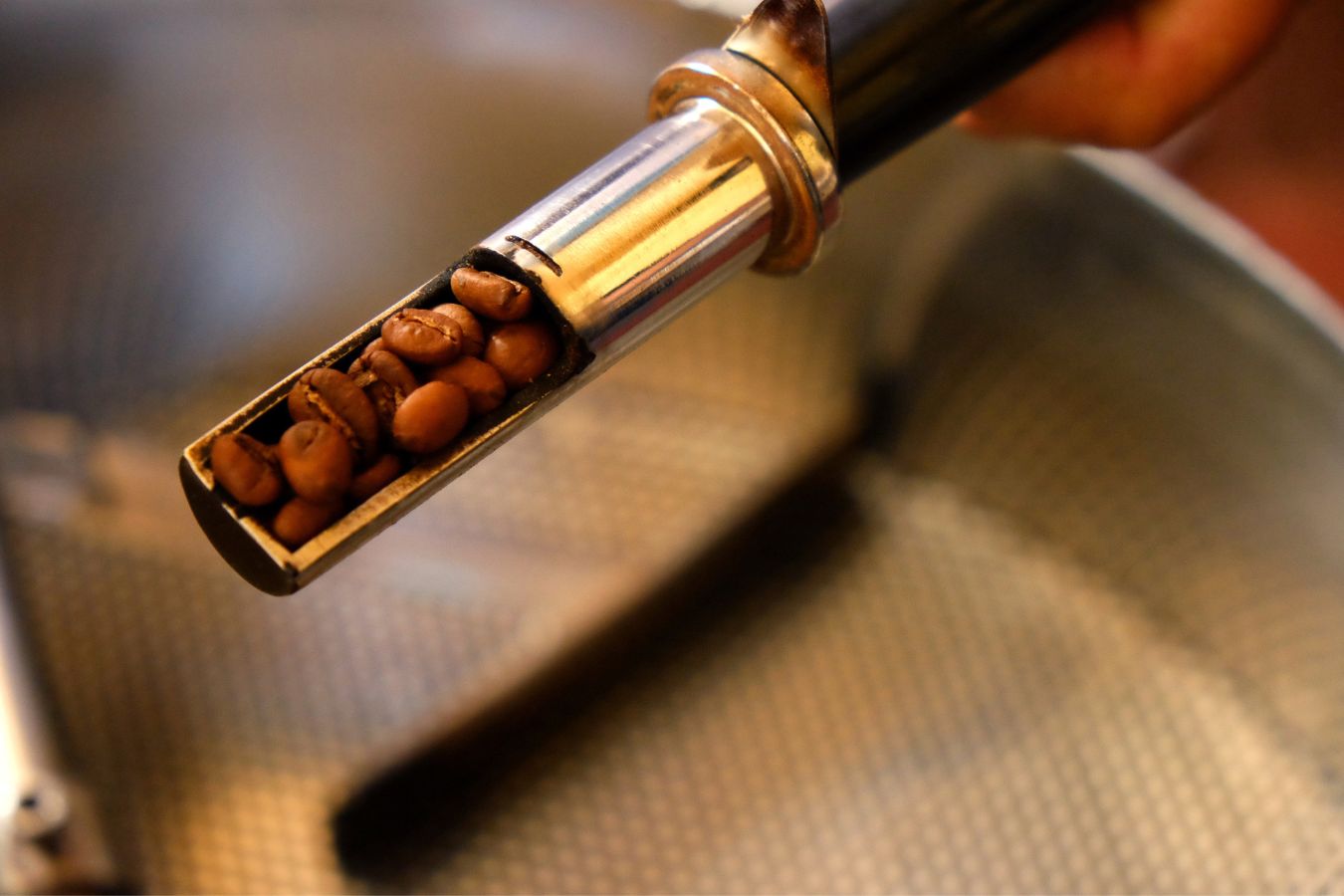
Coffee roasts: Influence principle
These components do not contribute to the flavor of coffee in any way. If you crush green coffee and mix it with hot water, you’ll get a whiff of grass, raw seeds, and a sour, unpleasant taste. When you roast your coffee, something magical happens.

These molecules react, change, and pyrolysis during the healing process, depending on the temperature, resulting in a rich coffee flavor. You can imagine that if you leave sugar whole, it has no fragrance and only sweetness.
However, when the sugar is heated to a reasonable temperature, it turns into caramel, with a sweeter aroma and a more attractive sweetness. However, if the heat is too high, it will burn, emit an unpleasant odor, and taste harsh. What we’ve just mentioned is also one of them.
What are the different levels of roasting in coffee?
There are three primary roasting levels in Vietnam and around the world: light roast (Cinnamon – City), a medium roast (City – Full City), and dark roast (Cinnamon – Full City) (Viennese – French – Italian).
A separate article will be dedicated to the English terminology describing the roast level above. This article aims to discuss the impact of roasting levels on coffee flavor.
As a result, Helena Coffee will investigate the effects of three different roasting levels: light roast, medium roast, and dark roast.
Light roast coffee
The beans frequently come out of the roasting drum before the roast is finished at this roast level. 1. Coffee beans that have been lightly roasted will lose the least amount of roast levels.
The reason for this is that the steam hasn’t completely gone. For roasters and coffee manufacturers, this is hugely profitable. Light roasts produce some coffees’ nutty, grassy, and floral scents. When taken and felt on the tongue, the texture* of the coffee will be very dilute.
The light roast may be at the 1st explosive end for some roasters. This is the preferred roast level for 3rd wave roasters, which originated in the Nordic countries. The most acidic coffee beans with a thin texture can be found at this roast degree. Coffee beans have gone through a stage of development.
Medium roast coffee
Coffees with this amount of roasting are usually well-balanced. A few minutes before explosion 2, coffee beans are customarily freed from the roasting drum. The color of the coffee beans will now be a distinctive brown. There will be some oil two to three days after roasting, but only in a few beans and a few spots on the beans.
This medium roast is popular with many individuals. The medium roast balances the coffee, making it enjoyable to drink with mild acidity, a faint caramel flavor, and a medium body. Soft caramel notes, ripe fruit scents, and a medium coffee body are all flavors that are easily detectable in roasted coffees.
Dark roast coffee
In reality, varied levels of boldness will be assigned to this amount of deep roasting. Because the coffee beans will change flavor more quickly as the temperature rises when roasted to this level of intensity. People divide this roast level into three categories worldwide: Viennese, French, and Italian.
This amount of dark roasting will result in a significant loss of coffee beans. The amount of money lost can range from 18% to 20%. Coffee beans will have a higher oil content. They can be so greasy that individuals who haven’t had much interaction with the coffee would think it’s because of the butter added by the roaster.
Dark-roasted coffees have a sweet, bitter taste, a distinctive caramel aroma, a caustic, somewhat acidic flavor, and a thick, whole body on the tongue when drunk.
The shorter the shelf life, the darker the roast
You might be surprised to learn that the darker the roasted coffee beans are, the simpler they can oxidize in the air. As a result, they will last less time in storage than lightly roasted coffee beans.
The reason for this is that as the roast degree increases, the structure of the coffee beans expands, making the beans larger but also hollower and more exposed to the air. Furthermore, dark roasted coffee absorbs oil, increasing the moisture content of roasted coffee beans.
THE IMPACT OF ROAST STYLE ON THE FLAVOR OF COFFEE
Consider the coffee traits as they line up above each roast style as one reads the final graph vertically. What qualities in a cup of coffee do you admire the most? Coffee roasted to a medium roast may be ideal if you enjoy a bright, medium-bodied, aromatic cup that showcases varietal identity. If you’re looking for a coffee with a lot of body and sweetness, but not a lot of acidities, then a dark-roasted coffee should do the trick.
At first look, the graph appears to indicate that medium dark is the ideal roast type for all coffees, as three of the five attributes cross around the curve’s peak, with varietal character just below. Some roasters describe a medium-dark roast as a “full flavor roast” because of this.

A medium-dark roast, on the other hand, reduces acidity, which is a desirable quality for many coffee drinkers and mellows varietal character. The citrus aromas of a milder roasted Ethiopian, for example, would intensify to dark chocolate and dried fruit at that degree.
Roasting all coffees to the same degree would simply not please the tastes of clients with very different coffee palates. Furthermore, coffees praised by experienced tasters for their bright, fruity, and wine-like qualities are typically roasted lighter.
To optimize flavor without hurting the very fragile bean structure of a soft, dry-processed Brazilian coffee, for example, a lighter roast is required. Because their hard beans can sustain higher temperatures, some high-grown washed coffees work well in a variety of roast styles, and they have similar flavor profiles at different levels of roast.
Such coffee is a fine Colombian. Others display well-known characteristics at a specific moment in the roasting process. One is Kenyan coffee, which is known for its bright acidity and citrus overtones. The Kenyan’s acidity suffers when roasted too long, and its fruity flavors deepen to pine.